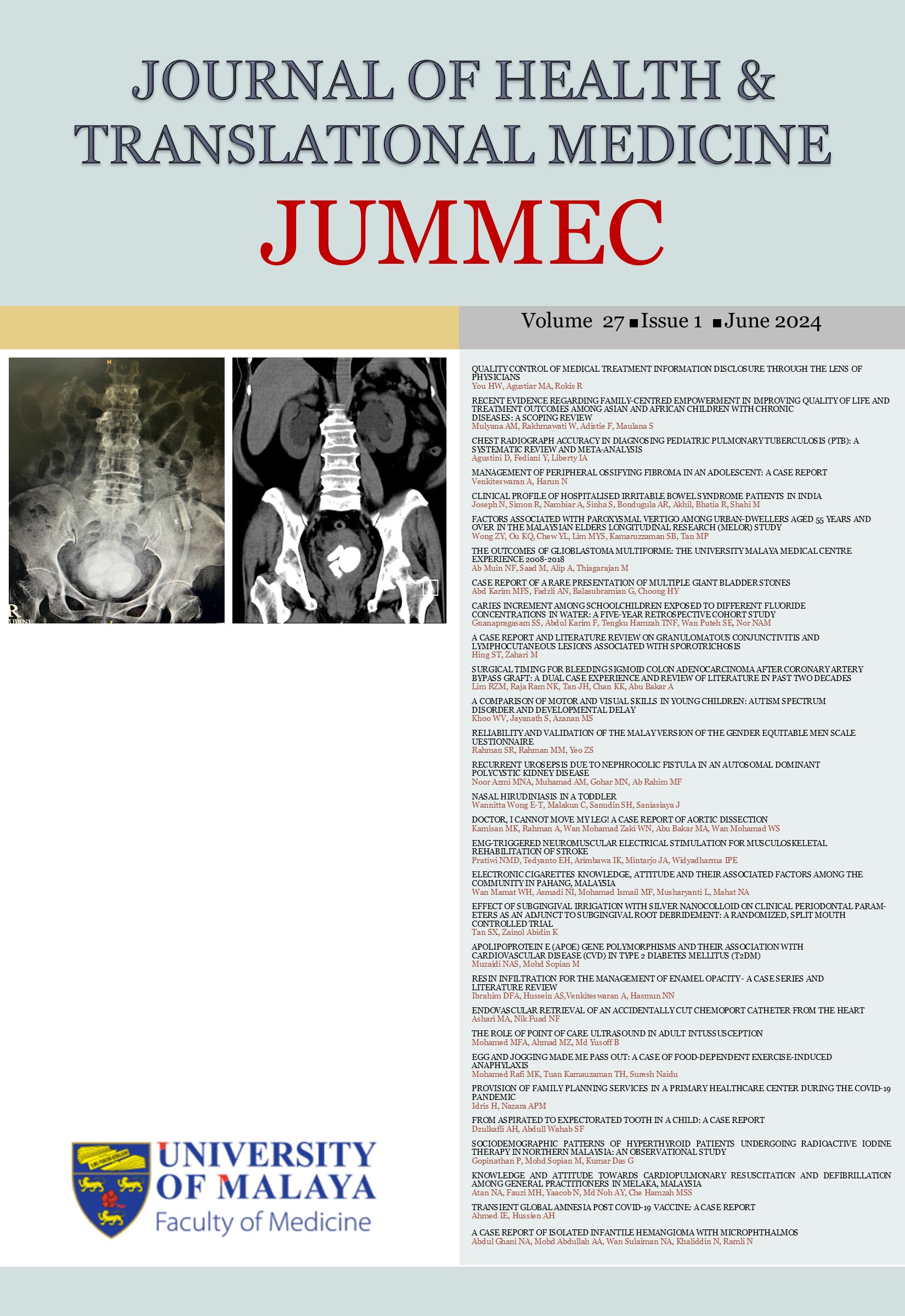A COMPARISON OF MOTOR AND VISUAL SKILLS IN YOUNG CHILDREN: AUTISM SPECTRUM DISORDER AND DEVELOPMENTAL DELAY
Received 2023-05-09; Accepted 2023-08-25; Published 2024-01-05
DOI:
https://doi.org/10.22452/jummec.vol27no1.12Keywords:
developmental delay, autism spectrum disorder, Malaysia, visual skills, motor skillsAbstract
Autism spectrum disorder (ASD) causes limitations in a child’s development especially language skills and social
interaction skills. However, deficits in other developmental domains are often present and common across children of different ages. This study aimed to explore the relationships of motor, visual and cognitive domains with ASD severity and the differences between children with ASD and those with developmental delay without ASD (DD). The study uses the Schedule of Growing Skills II, specifically the locomotor, manipulative, visual domains using developmental quotient scores, to explore motor, visual and cognitive delay in young children aged 24 to 60 months. One hundred and ninety-nine (199) children were divided into two groups: children with ASD, and children with DD. There was a high prevalence of delay in cognitive (94%) and manipulative skills (87%) in both ASD and DD groups. Children with ASD had higher locomotor scores (DQ = 83.27) compared to children with DD (DQ = 67.13). In ASD children, motor skills were poorer for those diagnosed at an older age and in boys (p < 0.05). Children with more severe ASD were found to have poorer manipulative, visual and cognitive skills (p < 0.01). The study highlighted weaknesses of nonlanguage components in children with severe ASD and the strength of locomotor skills in children with ASD compared to children with DD. However, the limitation of a single-centred study means the findings are not representative of the population of children with ASD and those with DD in Malaysia. In the care of children with ASD in clinical practice, development assessment of every domain is important to ascertain areas of limitations in non-language domains, especially in severe ASD. Future longitudinal research on children with ASD on a larger sample size will allow a better understanding of the trajectory of development in relation to ASD severity.
Downloads
Downloads
Published
Issue
Section
License
All authors agree that the article, if editorially accepted for publication, shall be licensed under the Creative Commons Attribution License 4.0 to allow others to freely access, copy and use research provided the author is correctly attributed, unless otherwise stated. All articles are available online without charge or other barriers to access. However, anyone wishing to reproduce large quantities of an article (250+) should inform the publisher. Any opinion expressed in the articles are those of the authors and do not reflect that of the University of Malaya, 50603 Kuala Lumpur, Malaysia.


